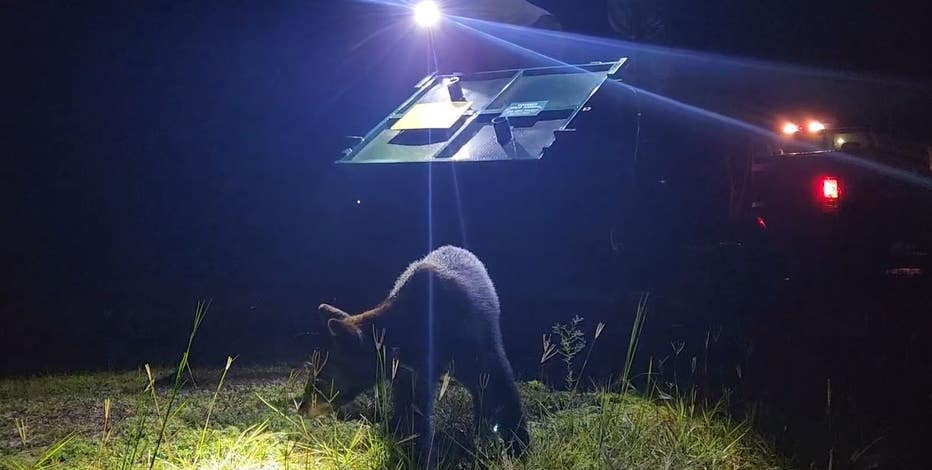Circle of life: Walt Disney World welcomed more than 300 fur babies this year
Disney World welcomed 300-plus animal babies
It's baby fever at Walt Disney World as hundreds of animals have been born throughout the parks and resorts this year. Walt Disney World welcomed more than 300 baby animals throughout the parks and resorts since January. From a zebra to a duiker, eagle ray pup, cotton-top tamarin twins and so many more new animals at the parks.
LAKE BUENA VISTA, Fla. - It's baby fever at Walt Disney World as hundreds of animals have been born throughout the parks and resorts this year.
Walt Disney World welcomed more than 300 baby animals throughout the parks and resorts since January. From a zebra to a duiker, eagle ray pup, cotton-top tamarin twins and so many more new animals at the parks.
Cotton top tamarin are a critically endangered species with only about 7,000 left in the wild. Walt Disney World's Animal Kingdom says they are part of a species survival plan to help preserve the endangered species.
An animal keeper with Animal Kingdom told FOX 35 how they connected the two parents Hermie and Draco.
"We got this female last November, put her with Draco, and right away they liked each other and decided they wanted to make babies, which is really great for their species," said Sara Frumoff, an animal keeper at Disney’s Animal Kingdom.
They are critically endangered. They do suffer from the pet trade and deforestation. So there might be one day when they're not left in the wild, but at least we would still have them in zoos." Frumoff said the cotton-top tamarin twins are doing well and learning a lot in just a short time.
Featured
VIDEO: Black bear spotted at Disney World's Magic Kingdom released into Florida national forest
An adult female black bear who found her way into a tree near Walt Disney World's Magic Kingdom on Monday has been released into the Ocala National Forest, the Florida Fish and Wildlife Conservation Commission said.
"They love to jump around on the vines and they love to jump on each other and try to wrestle with mom and dad. It is all very cute to watch," said Frumoff. FOX 35 Orlando also got to see a yellow-backed duiker that was born in May at Disney’s Animal Kingdom. In the wild, the small antelope can be found in Central and Western Africa.
The species can be shy, which is why Veterinarian Dr. Betsy Stringer had to work hard to gain the trust of the mother duiker named Pearl.
"They’re an animal normally you can’t approach or touch, but I needed to ultrasound her to monitor the pregnancy. So it took months, of weekly check-ins. At first, I would just feed her, slowly kneel down next to her," explained Dr. Stringer.
Dr. Stringer worked to gain that trust and was able to perform ultrasounds on Pearl before she had her baby.
"The first time I saw the baby on the ultrasound it was just this amazing moment where she trusted me to do that," said Dr. Stringer. "It was definitely more rewarding for me. There are some animals that are just more trusting – duikers are not and it was a huge win for us because I had to work hard to get that trust."The animal keepers and veterinarians work hard to keep animals safe, healthy, and strong all while they hope to inspire the next generation.
"This has been one of the most rewarding parts of my career thus far, is getting to watch these babies grow up and also getting to interact with the guests and really see the excitement on the guest's faces when they see these animals," said Frumoff. "Knowing that hopefully, I helped inspire somebody to care about wildlife or to care about conservation."


